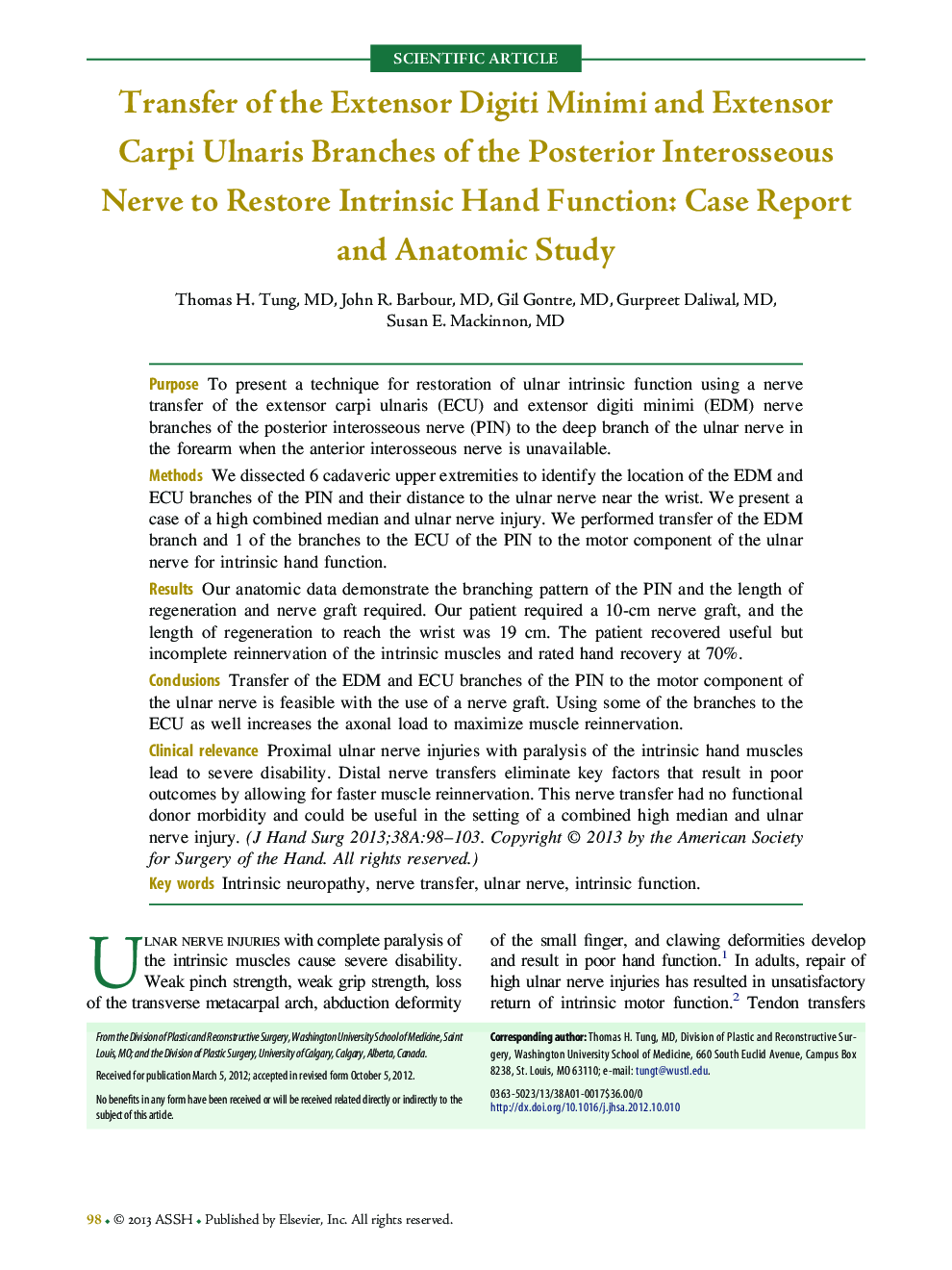| کد مقاله | کد نشریه | سال انتشار | مقاله انگلیسی | نسخه تمام متن |
|---|---|---|---|---|
| 4069679 | 1604387 | 2013 | 6 صفحه PDF | دانلود رایگان |

PurposeTo present a technique for restoration of ulnar intrinsic function using a nerve transfer of the extensor carpi ulnaris (ECU) and extensor digiti minimi (EDM) nerve branches of the posterior interosseous nerve (PIN) to the deep branch of the ulnar nerve in the forearm when the anterior interosseous nerve is unavailable.MethodsWe dissected 6 cadaveric upper extremities to identify the location of the EDM and ECU branches of the PIN and their distance to the ulnar nerve near the wrist. We present a case of a high combined median and ulnar nerve injury. We performed transfer of the EDM branch and 1 of the branches to the ECU of the PIN to the motor component of the ulnar nerve for intrinsic hand function.ResultsOur anatomic data demonstrate the branching pattern of the PIN and the length of regeneration and nerve graft required. Our patient required a 10-cm nerve graft, and the length of regeneration to reach the wrist was 19 cm. The patient recovered useful but incomplete reinnervation of the intrinsic muscles and rated hand recovery at 70%.ConclusionsTransfer of the EDM and ECU branches of the PIN to the motor component of the ulnar nerve is feasible with the use of a nerve graft. Using some of the branches to the ECU as well increases the axonal load to maximize muscle reinnervation.Clinical relevanceProximal ulnar nerve injuries with paralysis of the intrinsic hand muscles lead to severe disability. Distal nerve transfers eliminate key factors that result in poor outcomes by allowing for faster muscle reinnervation. This nerve transfer had no functional donor morbidity and could be useful in the setting of a combined high median and ulnar nerve injury.
Journal: The Journal of Hand Surgery - Volume 38, Issue 1, January 2013, Pages 98–103